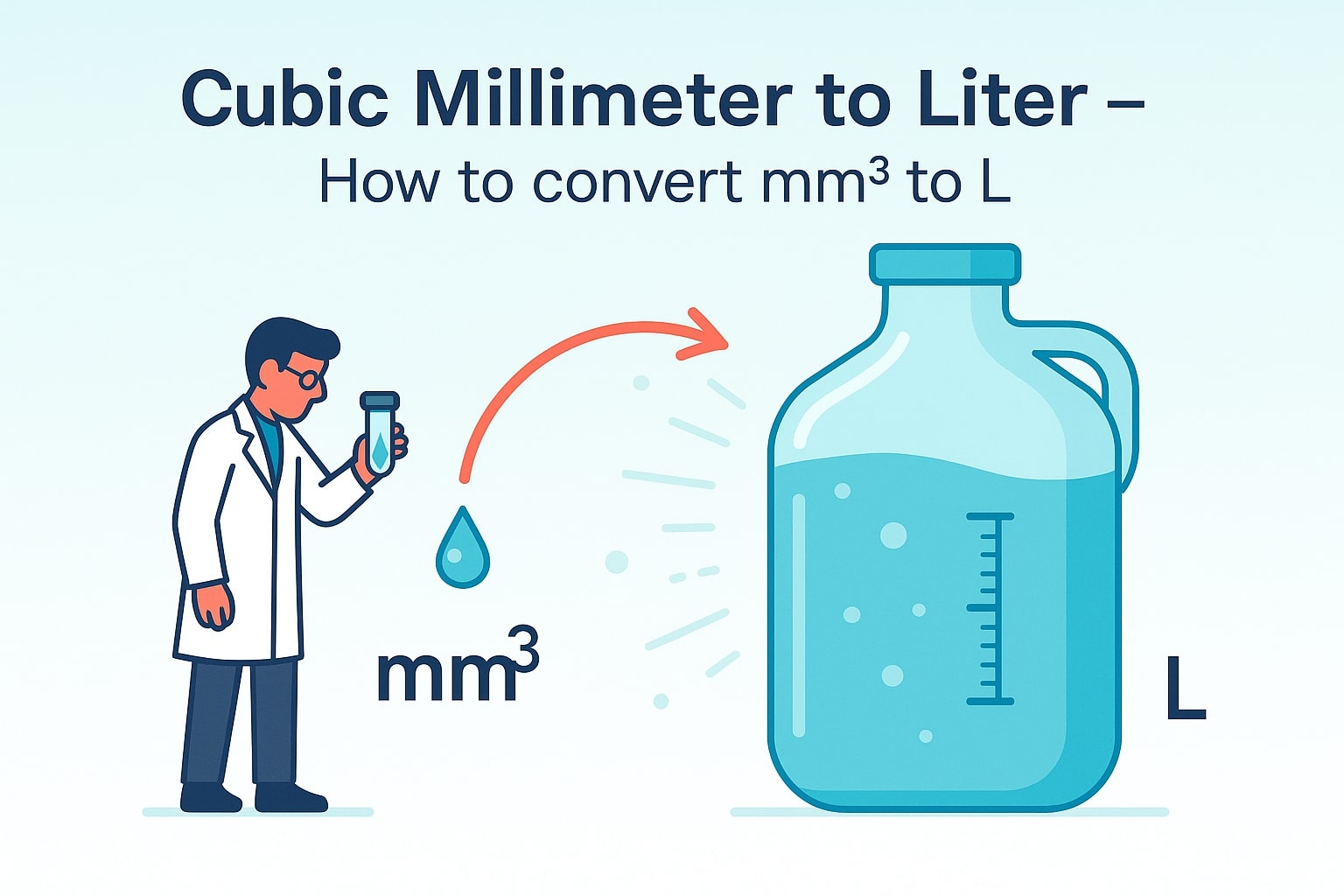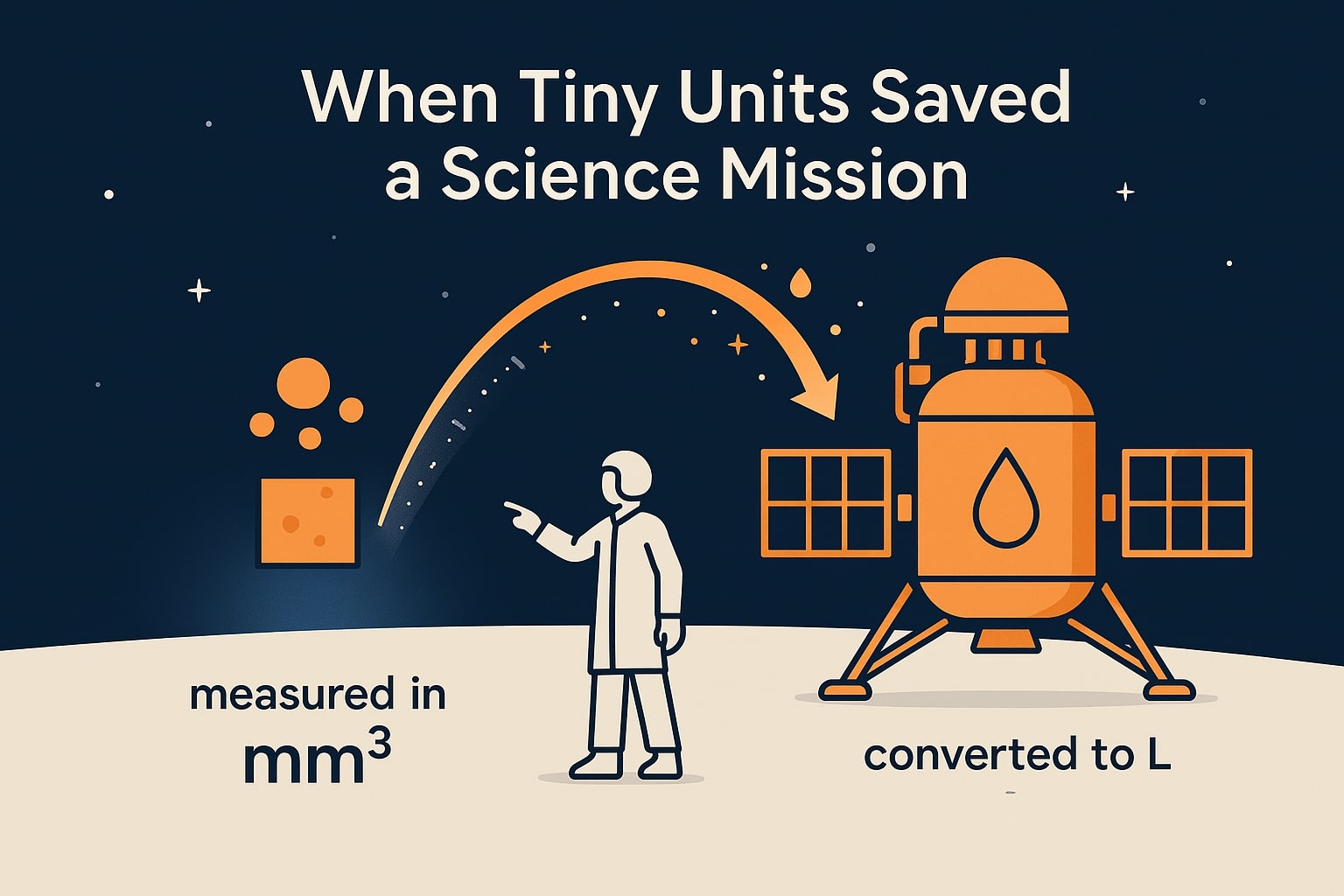Cubic Millimeter to Liter – How to convert mm³ to L
Need to change cubic millimeter to liter for a science project, lab calculation, or just to understand tiny volumes on a bigger scale? From medical doses to fluid measurements, this conversion bridges microscopic units with everyday liquid quantities. Jetcalculator simplifies the process, but if you want to understand the math (and uncover a few surprising facts), this guide is for you.

What is a cubic millimeter (mm³)?
A cubic millimeter (mm³) is a very small unit of volume in the metric system, equal to the space inside a cube that’s 1 millimeter on each side. It equals 0.001 cubic centimeters (cm³), making it perfect for measuring tiny amounts, like droplets of liquid or microscopic objects.
Cubic millimeters are commonly used in medical research, chemistry, and engineering when dealing with minuscule quantities where precision is critical.
What is a liter (L)?
A liter (L) is one of the most widely used volume units in the metric system. It equals 1,000 cubic centimeters (cm³), or 1,000,000 cubic millimeters (mm³).
Liters are the everyday standard for liquids, from bottled water to gasoline. While a cubic millimeter represents the microscopic, a liter gives you a sense of scale you can hold in your hands.
How to convert cubic millimeter to liter
The conversion is straightforward:
1 liter = 1,000,000 cubic millimeters
To convert:
Liters (L) = Cubic Millimeters (mm³) ÷ 1,000,000
Example: If you have 50,000 mm³ of fluid:
50,000 ÷ 1,000,000 = 0.05 L
You can calculate manually, or skip the math entirely with our Volume Converter and other Conversion tools.
Did you know?
-
A single raindrop holds about 50 cubic millimeters of water, so you’d need 20,000 raindrops to make just one liter.
-
The human heart pumps roughly 70 milliliters of blood per beat, which equals 70,000 cubic millimeters – a reminder of how small units add up fast.
-
The smallest commercial perfume sample vials are typically 1,000 cubic millimeters (1 milliliter), meaning you’d need 1,000 vials to reach a single liter.
-
The International Space Station uses coolant systems measured down to cubic millimeters to manage heat but reports overall coolant quantities in liters, requiring constant precise conversions.
When Tiny Units Saved a Science Mission
In 2018, researchers working with NASA’s Mars InSight mission had to measure fuel and chemical stabilizers for the lander’s equipment with extreme precision. According to NASA’s public logs, some chemical samples were tracked in cubic millimeters to ensure balance in the spacecraft systems.
These quantities were later converted into liters for reporting and supply calculations back on Earth, since liters are easier for teams to communicate and standardize globally. Without careful unit conversions bridging the microscopic with the measurable, the mission could have faced delays or inaccuracies in preparation.

Wrapping It Up
Converting cubic millimeter to liter might seem like a leap because of the difference in scale, but it’s as easy as dividing by 1,000,000. Whether you’re handling scientific data, medical volumes, or just curious about how small amounts add up, this conversion helps make sense of the numbers.
For quick, accurate results, use our Volume Converter or explore other Conversion tools to make every calculation effortless.

